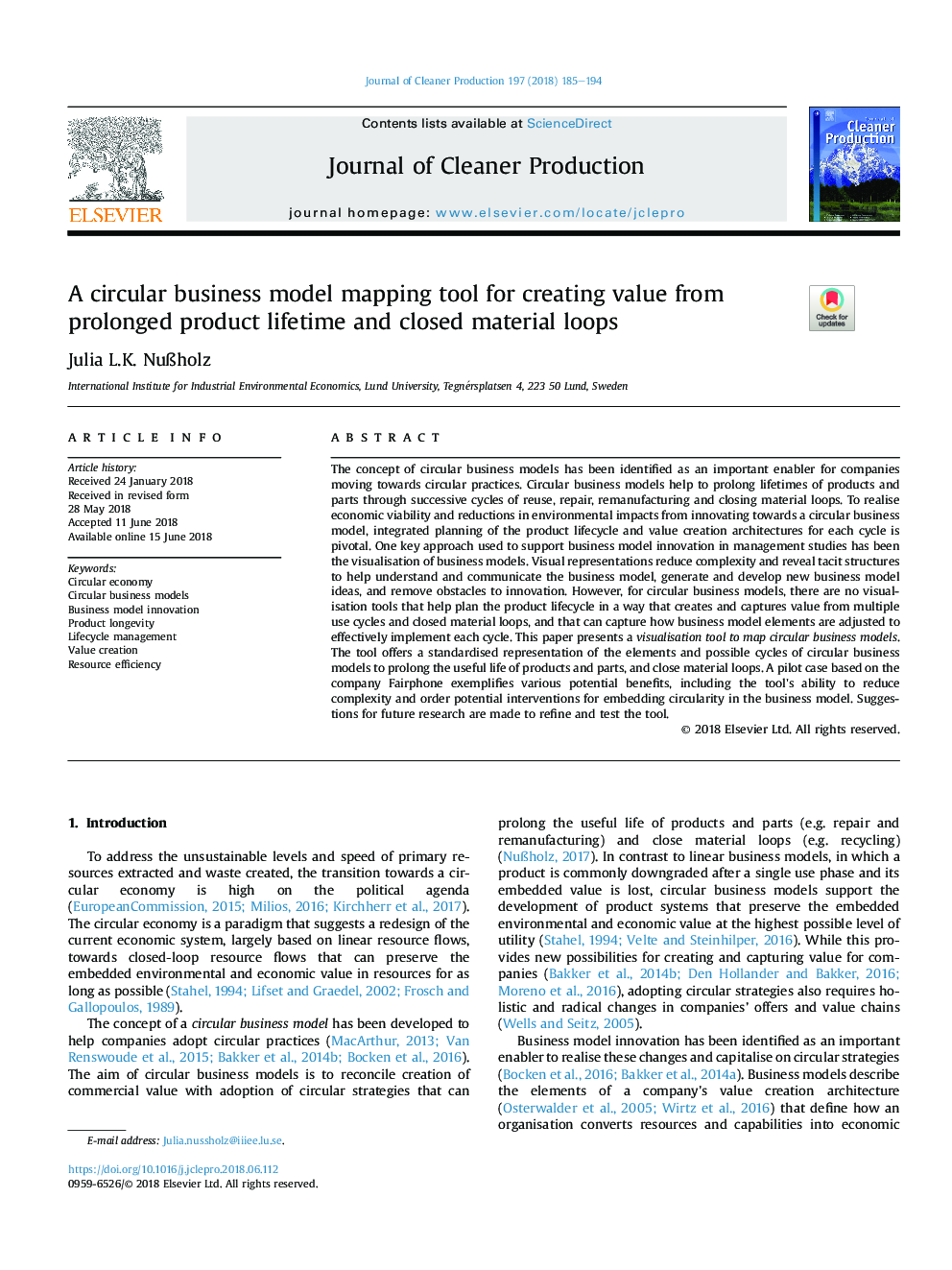| Article ID | Journal | Published Year | Pages | File Type |
|---|---|---|---|---|
| 8093757 | Journal of Cleaner Production | 2018 | 10 Pages |
Abstract
The concept of circular business models has been identified as an important enabler for companies moving towards circular practices. Circular business models help to prolong lifetimes of products and parts through successive cycles of reuse, repair, remanufacturing and closing material loops. To realise economic viability and reductions in environmental impacts from innovating towards a circular business model, integrated planning of the product lifecycle and value creation architectures for each cycle is pivotal. One key approach used to support business model innovation in management studies has been the visualisation of business models. Visual representations reduce complexity and reveal tacit structures to help understand and communicate the business model, generate and develop new business model ideas, and remove obstacles to innovation. However, for circular business models, there are no visualisation tools that help plan the product lifecycle in a way that creates and captures value from multiple use cycles and closed material loops, and that can capture how business model elements are adjusted to effectively implement each cycle. This paper presents a visualisation tool to map circular business models. The tool offers a standardised representation of the elements and possible cycles of circular business models to prolong the useful life of products and parts, and close material loops. A pilot case based on the company Fairphone exemplifies various potential benefits, including the tool's ability to reduce complexity and order potential interventions for embedding circularity in the business model. Suggestions for future research are made to refine and test the tool.
Keywords
Related Topics
Physical Sciences and Engineering
Energy
Renewable Energy, Sustainability and the Environment
Authors
Julia L.K. NuÃholz,
